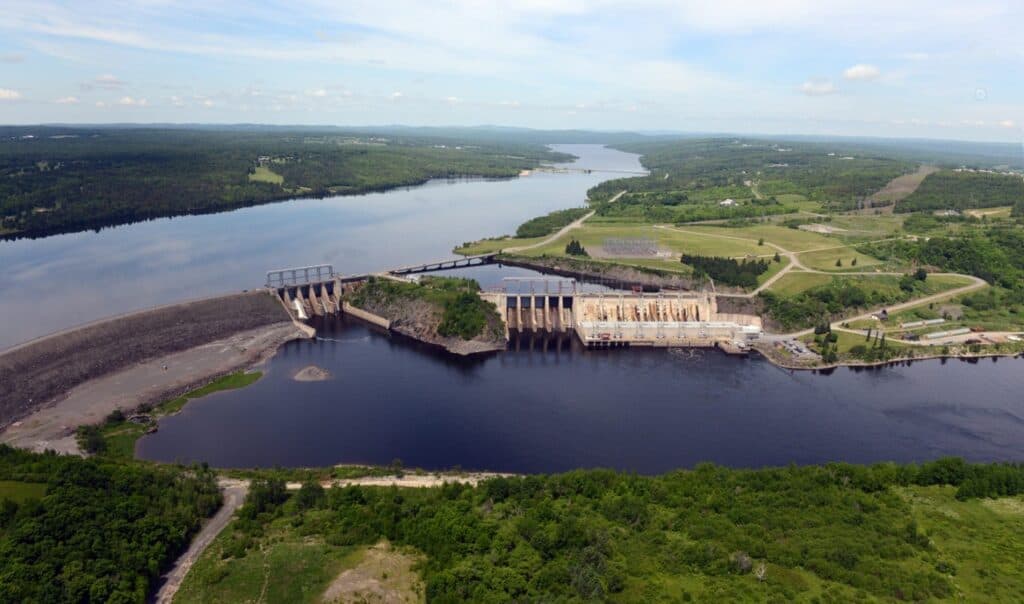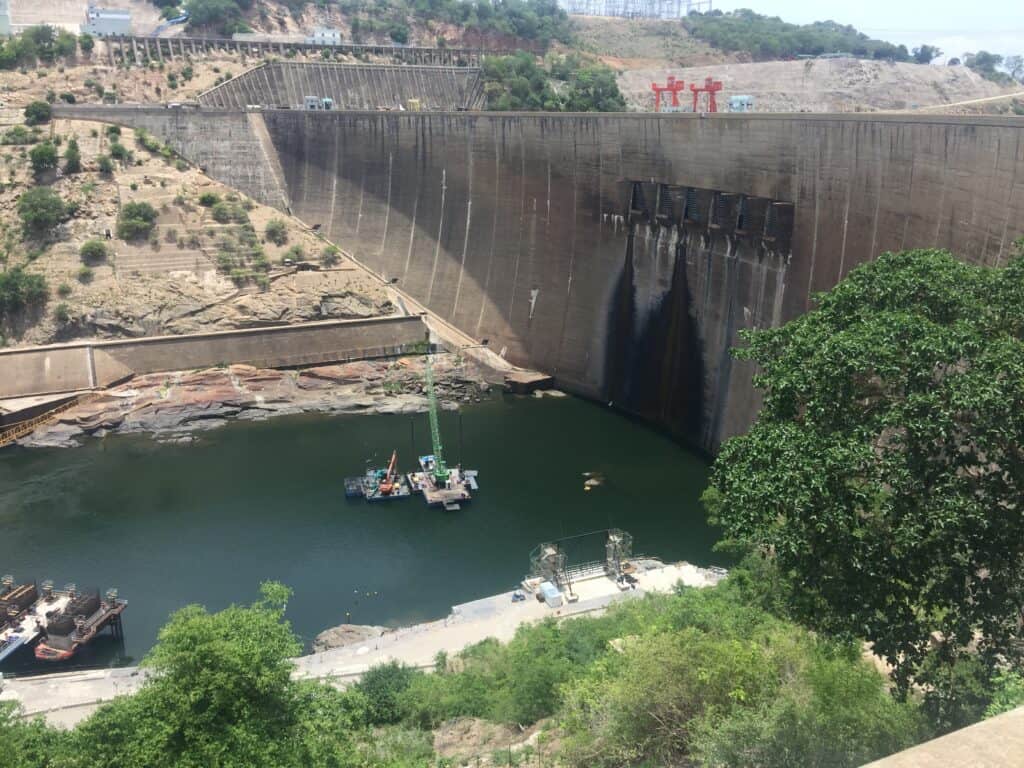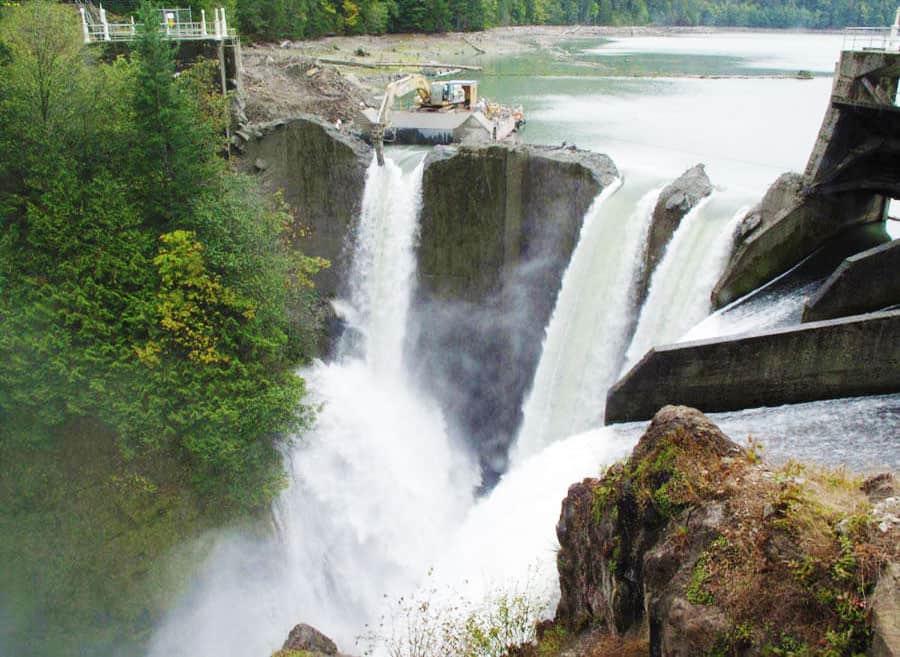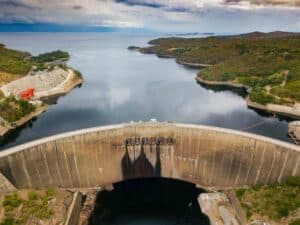
By 2050, most people on Earth will live downstream of tens of thousands of large dams built in the 20th century, many already operating at or beyond their design life, according to analysis by the United Nations University (UNU). The decommissioning of dams is therefore fast becoming as important to the overall planning process for infrastructure development as the original construction phase itself. The study calls for knowledge-sharing in the face of growing risk to sustainable water storage and management.
The report, Ageing water infrastructure: An emerging global risk, by UNU’s Canadian-based Institute for Water, Environment and Health (UNU-INWEH), says most of the 58,700 large dams worldwide were constructed between 1930 and 1970 with a design life of 50 to 100 years. As the decades roll on, these resource-critical structures will probably begin to express signs of aging.
Signs of ageing include increasing cases of dam failures, progressively rising costs of repair and maintenance, more reservoir sedimentation, and loss of a dam functionality and effectiveness — all of which the paper describes as being strongly interconnected manifestations of the passing of time .
Whilst the report says dams that are well designed, constructed and maintained can easily reach 100 years of service, it nevertheless predicts an increase in decommissioning — a phenomenon gaining pace in the USA and Europe — as economic and practical limitations prevent ageing dams from being upgraded, or their original use proves obsolete.
The size of the challenge is significant. Worldwide, the huge volume of water stored behind large dams is estimated at 7,000 to 8,300 cubic kilometres — enough to cover about 80% of Canada’s landmass under a metre of water.
Mapping the scale of the problem, the report provides an overview of dam ageing by world region and primary function — water supply, irrigation, flood control, hydropower, and recreation.
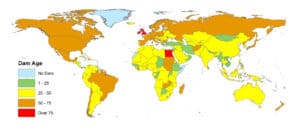
It also details the increasing risk of older dams, rising maintenance expense, declining functionality due to sedimentation, benefits of restoring or redesigning natural environments, and societal impacts — pros and cons — that need to be weighed by policymakers. It suggests the nature of these impacts varies significantly between low- and high-income countries.
The analysis also includes dam decommissioning or ageing case studies from the USA, France, Canada, India, Japan, and Zambia & Zimbabwe.
Climate change will accelerate the ageing process
The report aims to attract global attention to the creeping issue of ageing water storage infrastructure and stimulate international efforts to deal with this emerging, rising risk, says co-author Vladimir Smakhtin, Director of UNU-INWEH:
“Underlined is the fact that the rising frequency and severity of flooding and other extreme environmental events can overwhelm a dam’s design limits and accelerate a dam’s ageing process. Decisions about decommissioning, therefore, need to be taken in the context of a changing climate.”
With 93% of all the world’s large dams located in just 25 nations, the problem of ageing large dams today confronts a relatively small number of countries, notes lead author and UNU-INWEH Senior Researcher Duminda Perera:
“Large dam construction surged in the mid-20th century and peaked in the 1960s–70s, especially in Asia, Europe and North America, while in Africa the peak occurred in the 1980s. The number of newly-constructed large dams after that continuously and progressively declined.”
According to the report, the world is unlikely to witness another large dam building revolution as in the mid-20th century, but dams constructed then will inevitably be showing their age.
As many as 32,716 large dams — more that half the total worldwide (55%) — are located in just four Asian countries: China, India, Japan, and the Republic of Korea. China alone has 23,841 large dams (40% of the world total). The majority will reach the 50-year threshold relatively soon, as will many large dams in Africa, South America, and Eastern Europe.
According to the report, the pace of large dam construction has dropped dramatically in the last four decades and continues to decline — in part because the best locations have been progressively diminishing, with nearly 50% of global river volume already fragmented or regulated by dams.
There are also strong concerns now regarding the environmental and social impacts of dams, as well as emerging ideas and practices on alternative types of water storage, nature-based solutions, and energy production beyond hydropower.
Drivers of dam decommissioning
Public safety, escalating maintenance costs, reservoir sedimentation, and restoration of a natural river ecosystem are among the reasons driving dam decommissioning.
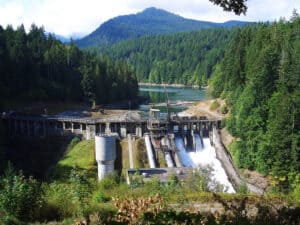
However, most removed to date have been small; decommissioning large dams — defined by the International Commission on Large Dams (ICOLD) as 15 or more metres from lowest foundation to crest, or 5-15m impounding more than 3 million cubic metres — is still in its infancy.
Case studies of ageing and decommissioned large dams illustrate the complexity of the often-lengthy process, adds co-author and UNU-INWEH Adjunct Professor R Allen Curry, based at the University of New Brunswick:
“Even removing a small dam requires years (often decades) of continuous expert and public involvement, and lengthy regulatory reviews. With the mass ageing of dams well under way, it is important to develop a framework of protocols that will guide and accelerate the dam removal process.“
Decommissioning will also have various positive and negative economic, social, and ecological impacts to be considered in a local and regional social, economic, and geographic context, which the report concludes can be critical to protect the broader, sustainable development objectives for a region.
Supported by the Government of Canada through Global Affairs Canada, UNU-INWEH is hosted by McMaster University. In addition to the three UNU-INWEH experts, the report was co-authored by Spencer Williams, Graduate Institute of International and Development Studies, Geneva, Switzerland. and Taylor North of McMaster University, Hamilton, Canada.
Dams in numbers, country-by-country
USA/Canada
- 56: Average age of 90,580 US dams (all sizes);
- 85%+: US dams in 2020 operating at or beyond their life expectancy;
- 75%: US dam failures that occurred after 50 years of age;
- US$ 64 billion: Estimated cost to refurbish US dams;
- 1,275: Dams removed in 21 US states in the last 30 years; 80 removed in 2017 alone;
- 50%+: Large dams in Canada over 50 years old.
China
- 23,841: Large dams in China (the most of any country, and 40% of the world’s total);
- 55%: Proportion of the world’s large dams in just four countries — China, India, Japan, and Republic of Korea — the majority of which will soon reach 50 years of age;
- 60%: Proportion of the world’s large dams in Asia.
India
- 1,115+: Large dams in India that will be roughly 50 years old in 2025;
- 4,250+: Large dams in India that will be 50+ years old in 2050;
- 64: Large dams in India that will be 150+ years old in 2050;
- 3.5 million: The approximate number of people at risk if India’s Mullaperiyar dam, built 100+ years ago, were to fail — the dam, in a seismically active area, shows significant structural flaws and its management is a contentious issue between Kerala and Tamil Nadu States.
Japan
- 100+ years: Average age of large dams in Japan.
Australia
- 650: Large dams in Australia, half of them 50+ years old; 50+ have been in operation for 100+ years;
- 65%: Portion of Australia’s electricity generation from hydropower.
UK/Europe
- 100+ years: Average age of large dams in the UK;
- ~10%: Large dams in Europe 100+ years old.
Africa
- 2,000: Large dams in Africa (1 in 4 of them in South Africa), the fewest of any continent; mostly used for irrigation.
Further Reading:
- Access and download the full report Ageing water infrastructure: An emerging global risk;
- More about UNU-INWEH in general;
- More about McMaster University, in Canada;
- Also on SustMeme, Resource as a human right: ‘Future of Water’ in The Times;
- Also on SustMeme, Probably the best… water desalination project in India?
>>> Do you have sustainability news to broadcast and share? If you would like to see it featured here on SustMeme, please use these Contact details to get in touch and send us your Press Release for editorial consideration. Thanks.

